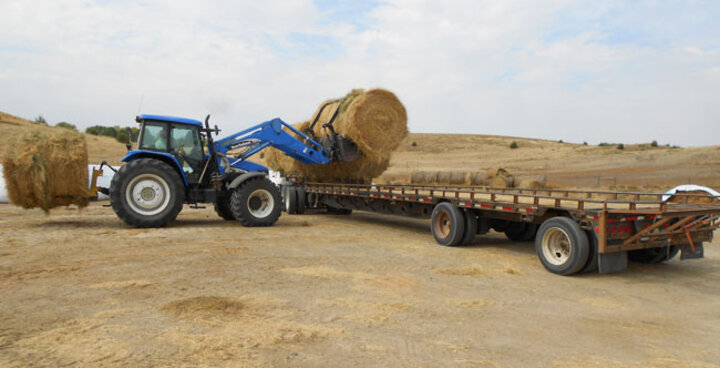
September 27, 2012
When Buying Hay, Don't Get More Than you Bargained For
The drought conditions gripping the state and region are not expected to let up for some time. For the past four months precipitation amounts have been below normal, while temperatures have regularly hit the 100° mark for most of the summer. Add to this the wild fire outbreaks that occurred during the same period and many regions are lacking vegetation of any kind or amount.
Other Potential Intruders
Hay bought locally is apt to have pests similar to your field, but when it comes from a long distance, new pests can be introduced that are harder to control.
In addition to noxious or invasive weeds or weed seeds, poor quality hay may contain alfalfa weevils or fire ants. Fire ants won’t survive a typical harsh Nebraska winter, but if it’s mild like last year and the hay is well-sheltered, they could be an unwelcome problem for a season or two.
How do you avoid the problem?
- Do your research. Find out what pests are a problem in the area where the hay was harvested.
- Check references.
- Reserve the right to refuse the hay after it arrives and you’ve checked it thoroughly.
- Feed this hay in a limited area. That way, if a problem does develop, you can keep it isolated and, hopefully, controlled.
Bruce Anderson
Extension Forage Specialist
Related Resource
Also see this September 2012 fact sheet from USDA Animal and Plant Health Inspection Service: Questions and Answers for Producers, Sellers, and Buyers of Baled Hay Moving from Areas Under Quarantine for Imported Fire Ant.
With these conditions, large scale operators and small herd owners are either reducing their livestock numbers or buying supplemental feed. The availability of hay in Nebraska and across the Midwest has been diminished substantially. In normal years, livestock are being rotated to later maturing pastures and feed is being stored for the winter. This year, livestock are being fed hay that is either lower in quality or normally reserved for winter.
The lack of hay is creating a dilemma for livestock owners who are trying to maintain their herds: spend more for the remaining good quality hay or spend a little bit less for something that is poorer in quality and may include noxious or invasive weeds. The short-term benefit of using low quality hay is not worth the long-term problems. Noxious and invasive weeds can become a problem that is equally as bad as the current drought situation. These plants can quickly overrun native or desirable plants and once established take years to remove completely. In fact, many noxious and invasive weeds are impossible to eradicate once they have become established in a field, pasture, or rangeland.
Consider this example from a grower I recently spoke to. He asked me about controlling leafy spurge in pasture being harvested for hay. I was surprised that it was being harvested, but referred him to a few UNL NebGuides for controlling leafy spurge. I then asked him how bad it was in his field. “Oh,” he said, “it is not my field. It is my neighbor's.” He told me he was watching them load the semi-tractor trailer bound for somewhere in Colorado. Shutter the thought.
The saying, “Desperate times lead to desperate measures,” should not be applied in the current hay situation in Nebraska or elsewhere. Always check your source for weed content — they are required by law to let you know. And, if you have noxious or invasive plants in your field(s), get rid of them before harvesting, removing, and storing or selling your hay.
Steve Young, Extension Weed Ecologist
West Central REC, North Platte
